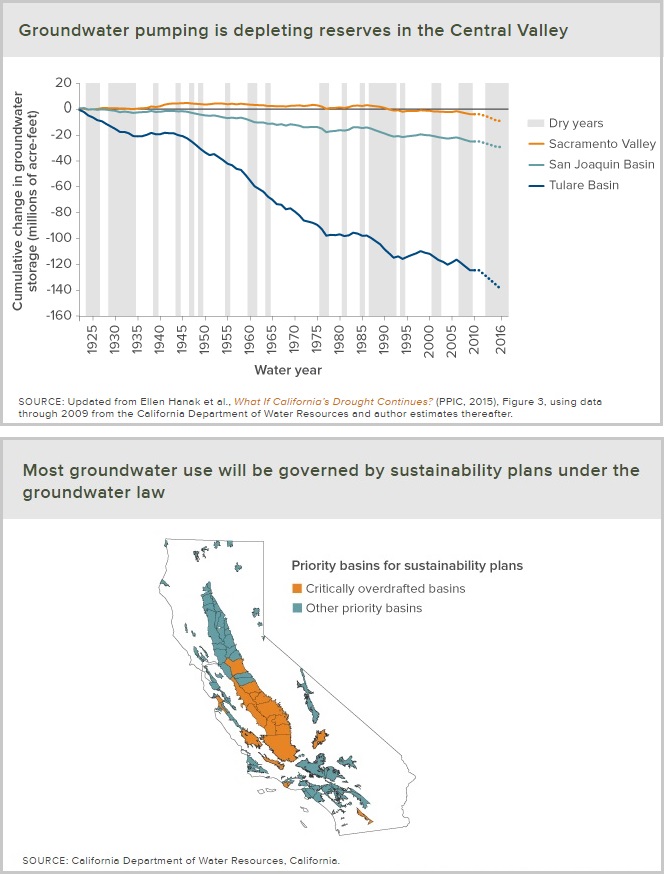
|
|

|
|
| April 25, 2024 |
|
What if California's drought returns? 
SAN FRANCISCO - (INT) - During the latest drought, the pace of well drilling increased as farmers and communities sought new sources of water. As water tables dropped, more than 3,500 domestic wells went dry.
A study by the the Public Policy Institute of California (PPIC) found in contrast to surface water, groundwater use has largely been unregulated under California law until recently. Many basins have experienced long-term overdraft, and 21 of the state’s 515 basins are now considered "critically overdrafted.” Making matters worse, in many rural areas, nitrate—produced by nitrogen fertilizer and manure—is polluting local drinking water supplies. In some urban areas, basins are contaminated by industrial chemicals. Salt accumulation in inland basins and salt water intrusion in some coastal groundwater basins can damage crops and contaminate drinking water supplies. The state’s 2014 Sustainable Groundwater Management Act gives local agencies the tools and authority they need to develop and implement plans that will bring their basins into balance. The most stressed basins have until 2020 to adopt plans to achieve groundwater sustainability over a 20-year period, the PPIC said. About 85% of Californians depend on groundwater for some portion of their water supply. Some communities rely entirely on groundwater for drinking water, and it is a critical resource for many farmers in the Central Valley and Central Coast. Story Date: June 3, 2017
|